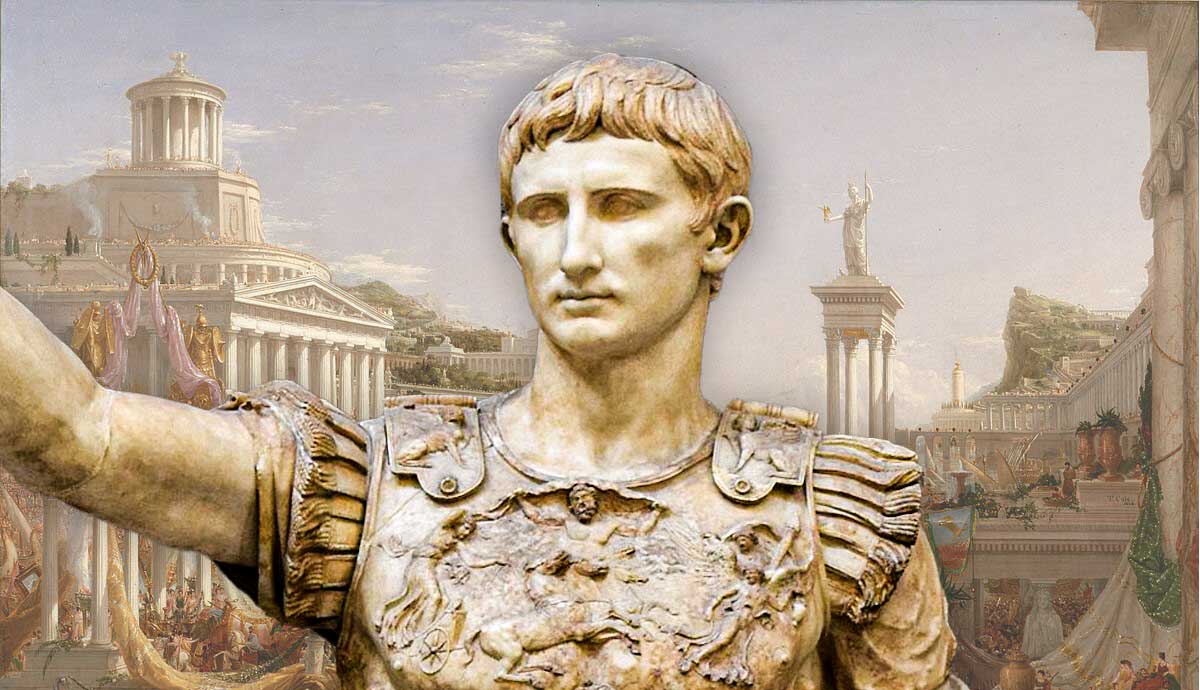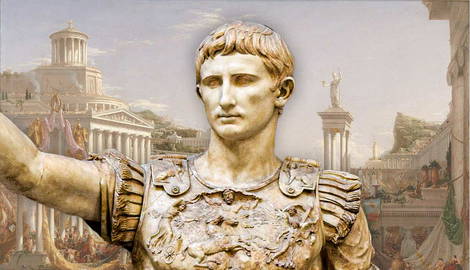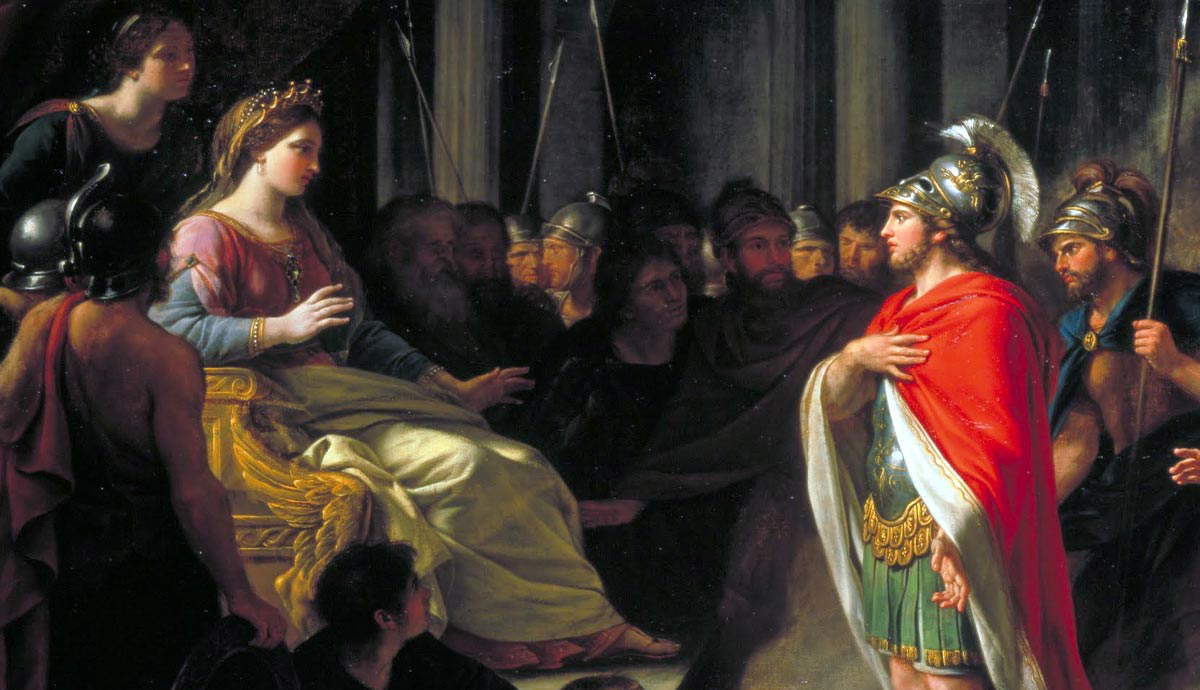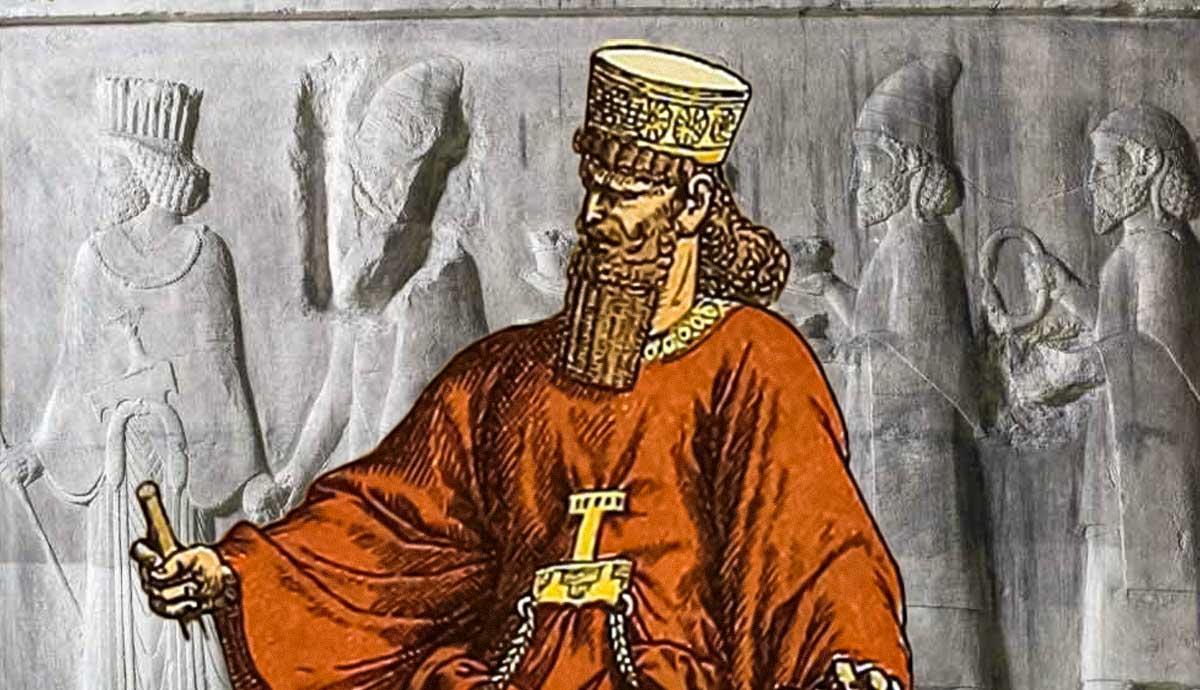
The “Pax Romana,” or “Roman Peace,” was a roughly 200-year period between 27 BCE and 180 CE. During this time, the Roman Empire enjoyed relative internal peace when compared with the years of civil war that preceded it and the struggles between imperial claimants that followed. It also saw the continuous expansion of the Roman Empire, which the Romans believed brought the benefits of Roman administration and culture to the world. But this vision of a Golden Age does not always hold up to scrutiny. The Empire was plagued by conflicts and rebellions throughout.
Why Is It Called the Pax Romana?

The name for this Golden Age is a composite of the Latin words “Pax” and “Romana,” both of which were used from the earliest periods of Roman civilization. While Romana‘s meaning is quite simple and self-explanatory, Pax has a more ideologically loaded etymology.
In its earliest incarnation, Pax was an agreement made that brought conflict to an end between Rome and those it fought against. As such, it could also refer to the conditions of the agreement and its consequences, such as an alliance or other type of relationship.
Therefore, as Rome grew in power, Pax began to implicitly denote its hegemony over those it had defeated or made peace with. As Roman civilization expanded into a Mediterranean empire, acquiring province after province, the extent and complexity of Roman Pax grew with it.
Culturally and religiously, it was also associated with other terms such as “Concordia” and “Salus,” which roughly translate to our modern terms of concord and stability or security. Under Augustus, Rome’s first emperor, the celebration and sacralization of the goddess Pax were also closely entwined with the concept.
With this history in mind, the composite Pax Romana was first popularized by writers in the 1st century CE, including Seneca the Younger and Flavius Josephus, who praised the influence and effects of Roman dominion and power.
It was then taken up and further popularized by modern historians, such as Edward Gibbon and Theodore Mommsen, when discussing the aforementioned 200-year period. Compared with what came before and after it, they saw this era as a period of unprecedented peace and prosperity, encapsulated neatly in the ancient term “Pax Romana.”
What Preceded the Pax Romana?

Importantly, this acclaimed period is said to have begun in 27 BCE, which is the same year that many historians have traditionally dated the beginning of the “Principate,” the name given to the rule of the early Roman emperors.
It was in this year that Octavian famously made a show of stepping down and relinquishing the unprecedented power he held during the civil war and second triumvirate, only to be granted further powers and be renamed Augustus, which symbolized his central position in the Roman state. He would go on to establish his position ambiguously as the first emperor while calling himself “first among equals,” creating a precedent that carried on until the fall of the Empire in the West 500 years later.
Leading up to Augustus’s monopolization of power, the 1st century BCE saw the dying days of the Roman Republic as Rome was wracked by civil war and recurrent unrest. After extending outwards from its original base in Latium, Rome’s continuous expansion increased both the power bases and ambitions of Rome’s politicians. Several heavyweights emerged, including Marius, Sulla, Pompey the Great, and finally Julius Caesar. When Caesar was made dictator for life and king in all but name, the Republican system was broken. Following his assassination, more powerful Roman generals fought to occupy the power vacuum. Octavian eventually emerged victorious. He then had the challenge of establishing himself as the unrivaled leader of Rome without suffering the same fate as his great-uncle Caesar.
How Did Augustus Start the Pax Romana?

Augustus played an essential role in establishing the Pax Romana. Out of the internal strife and closing days of the Republic, he was able to establish a remarkably stable and secure new state, now under the rule of one man.
Not only did his carefully calculated monopolization of power put an end to internal turbulence and dangerous political rivalry, but his conquests across the Mediterranean world helped to shore up the Empire’s defenses for centuries to come. Indeed, Augustus added around 14 provinces to the Empire, creating frontiers that utilized natural features such as mountains, deserts, and rivers for improved security.
While there were subsequent incursions into Roman territory and some worrying periods of frontier conflict or civil war, the Empire established by Augustus—and added to by his successors with varying levels of success—remained relatively fixed and functional until around the year 180 CE.

To consolidate his conquests both within Roman politics and across the Empire, Augustus placed significant emphasis on the Pax that he had brought to the Roman world. The idea of a new period of Roman peace was disseminated through literature, coinage, architecture, and public spectacles. The most prominent representation of the peace and prosperity provided by the new Augustan regime was the altar of Augustan Peace, known as the Ara Pacis, dedicated in 9 BCE.
But Was the Period of the Pax Romana Really Peaceful?

Early historians such as Edward Gibbon (1776) and Theodor Mommsen (19th century) reinforced for modern audiences the idea of the Pax Romana as an extended period of peace, tranquility, and prosperity for the Roman Empire. But more recently, historians have questioned this optimism.
The 200-year period covered three or four dynasties of emperors, depending on how they are labeled, along with a short period of intense civil war, with 69 CE seeing four rival emperors in one year. The Empire experienced warfare and rebellion in almost every corner of its territory at some point during these two centuries, not to mention the devastating “Antonine Plague” that struck towards the end of the Pax Romana.
In certain provinces, such as Judaea, later renamed Syria Palaestina, Egypt, and Britain, recurrent rebellions and revolts threatened the grip of Roman power over these provinces. On the Rhine and Danube frontiers, looking out towards central and northern Europe, there were constant pressure points. The Empire dedicated ten to 14 legions to guarding this border throughout the period.
Yet, what most historians tend to agree on is that, when compared to the periods before and after the Pax Romana, the era really did stand out as one of “relative” peace and prosperity. Moreover, when arguments are made about the many conflicts that litter this period, their scale and severity tend to be favorably compared with the ones that followed.
What Was the Pax Romana Like for the Empire’s Subjects?

Considering how Roman administration actually affected the populace throughout the Empire, especially the recently conquered, has been a major catalyst in the recent critical views of the Pax Romana. Since the days of the Republic, Roman expansion was in many ways very aggressive on the populations it fought against, albeit within a period and region in which violence was endemic.
Various massacres and mass enslavements mark the history of Rome’s expansion. Ancient Roman commentators repeatedly asserted that Rome would only get involved in conflicts when it had no other choice, but this posturing was often very disingenuous.

Power across the Empire was focused in the hands of the Roman elite, particularly the emperor, in the venerable capital. They ruled from Rome through provincial officials chosen from the Roman elite. While some provincial cities were able to maintain a level of independence overseen by their local aristocracies, most people had little say in the administration of their homes.
Most of the subjects of the Roman Empire did not gain proper citizenship until 212 CE and were beset by many of the issues endemic to ancient agrarian societies. There were sharp levels of inequality between the different classes and between urban and rural populations, along with a ubiquitous system of slavery and indentured servitude. Consequently, much of the Empire lived at subsistence levels or lower.
On top of this, there were frequent complaints of government corruption, on local and provincial levels, on top of banditry, religious unrest and persecution, plus droughts and disease that affected large swathes of the populace.
Nonetheless, the evidence would still suggest that there was a greater level of prosperity across the Empire and better security against external threats and invasion during the Pax Romana when compared with other periods of Roman history. It is, therefore, a mixed and complex story wherein the label of “peace” should be understood comparatively rather than literally.
For the most part, when contemporary historians assess the felicity and well-being of this period, they tend to refer to the elite and share limited information about the average person within the Empire. Writers like Josephus, Seneca, Pliny the Younger, and Aelius Aristides sing the praises of their time under Roman dominion, but they are aristocrats speaking from very privileged positions, benefitting most from what the Pax Romana provided. Whilst it is a period that should be favorably seen in comparison with other eras of Roman history, one should not imagine it to be the absolute utopia celebrated by some of its proponents.
What Ended the Pax Romana?

The historian Cassius Dio famously started his account of Commodus’s accession in 180 CE, which followed his joint rule with his father, Marcus Aurelius, with the ominous announcement that “our history now descends from a kingdom of gold to one of iron and rust.” One could, therefore, say with some justification that it was the reign of Commodus that brought the Pax Romana to an end.
However, this simplification misses some very important details. Although Commodus has justifiably gone down in history as a very misguided and megalomaniacal emperor, there were growing, Empire-wide issues that contributed just as much to the end of the celebrated Pax Romana.
For one, the reigns after the emperor Hadrian saw a steadily increasing threat along the frontiers in Central Europe, as well as increasing tensions in North Africa, Britain, and Parthia, Rome’s perennial enemy in the east. At the same time, the Antonine Plague struck, beginning in 165 CE and continuing until 180 CE, which may have wiped out up to a third of the Empire’s population.
These dual crises created a chronic strain on the resources and manpower of the Empire, as its borders were overrun and overworked in every corner. To compound such problems, Commodus and his near successors, except perhaps for Septimius Severus, all seemed incapable of administering the Empire in a conscientious and upright manner.
Whilst Commodus became infamous for his theatrics in the Colosseum and his masquerading as different gods, Severan successors such as Caracalla and Geta were little better. After the last Severan’s death, the Empire deteriorated into the chaotic “Crisis of the Third Century,” where a revolving succession of weak emperors almost caused the Empire to collapse.
Whilst there were subsequent periods of rejuvenation and renewed stability under notable emperors such as Aurelian, Diocletian, Constantine, and Theodosius, the Empire would never return to the comparatively steady state of affairs witnessed under the long Pax Romana.










